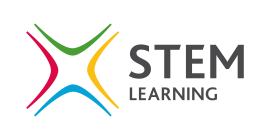- View more resources from this publisher
 STEM Learning
STEM Learning
CPD taster - Biology for non-specialists
This is a CPD taster created to give teachers a better understanding of what to expect when joining one of our secondary science courses. Below you will find a video and a task for you to do in your own time. Once you have done the activity, book on to Biology for non-specialists (NY290).
Are you teaching biology, but do not have a biology background? Are you wanting to progress your students’ understanding of the subject, but are not sure about how best to teach biology topics? In this video Gill Gunnill, professional development lead for biology, discusses how subject knowledge and pedagogical content knowledge are both crucial ingredients in developing your teaching and your students’ learning.
Task 1: Where does a tree's mass come from?
Gaining an understanding of your students' prior knowledge is key to enabling you to identify any misconceptions they have about the topic and build on existing understanding in the lessons. There are a range of approaches you can take to elicit misconceptions. In this example, we present a 'simple' question that could be used in the classroom.
Have a go at answering this question, and note your thoughts down.
Question
Imagine planting an acorn. It has a mass of just a few grams, but it may grow into a huge oak tree with a mass of many kilograms. Where do you think the additional mass comes from?
Acorn image by Marion Wellmann from Pixabay. Tree image by Kevan Craft from Pixabay.
Task 2. Listening for misconceptions
Now that you have written down your thoughts and ideas on how and why the tree is able to gain mass, share the same questions with some colleagues. You could also do this with students.
Ask them to write down or share their ideas and listen to what is being said. The aim of this activity is to identify the language that you are all using. Consider:
- Compare to your curriculum and scientific terminology: are you using the right terminology?
- Does someone's idea seem incorrect? You may want to ask your colleagues or students to elaborate on why they think their responses are correct.
- Which response is the 'best' fit with science explanations about how plants grow, or could you combine the ‘best bits’ from different peoples responses?
In this activity have you heard any misconceptions? For example: "the tree gets its food from the soil, making it gain mass". Here the misconception is about how the tree gains raw materials to build biomass - the mass of material in the plant.
What we are looking for are ideas about photosynthesis and the plant converting carbon dioxide and water into carbohydrates and other molecules, using energy from light. The carbohydrates that plants make by photosynthesis are their only source of food. These in turn can be converted by the plant into other kinds of molecules, such as lipids and proteins.
Next steps
In the summary video, Gill explains how you can approach this type of activity, the importance of conveying to students 'how science works', and what you can expect from attending the Biology for non-specialists course.
Show health and safety information
Please be aware that resources have been published on the website in the form that they were originally supplied. This means that procedures reflect general practice and standards applicable at the time resources were produced and cannot be assumed to be acceptable today. Website users are fully responsible for ensuring that any activity, including practical work, which they carry out is in accordance with current regulations related to health and safety and that an appropriate risk assessment has been carried out.




